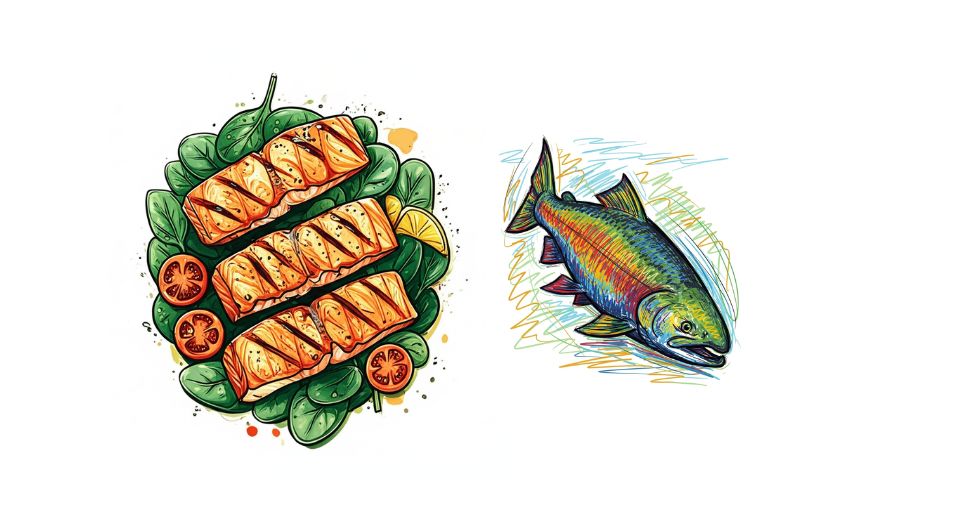
Aug 13, 2025

Metastat Insight latest report is a detailed examination of the Global Salmon Market, infusing its richness into life in a perspective that looks beyond industry realities to regional subtleties. The report transcends descriptive remarks by spinning a narrative tracing salmon from the snow-covered, unfenced streams where they are born, into the intricate tapestry of commerce, culture, and consumption that enshrouds them. While summarizing this landscape, the report doesn't just halt on numbers, but rather reads the numerous strands that bind producers, distributors, and consumers into a market underwritten by intricate turns and vast trends as well.
From ice-cold fjords of the North to aqua farms in temperate regions, salmon has shed its traditional role as a regional specialty to become a ubiquitous presence on tables and shelves across continents. The trends that are established in its universal trajectory are influenced by varied cultural affinities, culinary practices, and native transformations. The interesting aspect is the response of various societies towards salmon—some of them welcoming it as indulgence, others adopting it as part of their daily food. This flexibility has produced a special form of universality, whereby one species acquires numerous identities based on where it occurs and how it is consumed.
Salmon trading systems function with breathtaking efficiency, connecting distant seas to cities thousands of miles apart. The product stream is frequently a combination of wild gathering and farm-based output, both wildly variable in their supply systems and rhythms of season. These two sources pour into a single marketplace but possess very different stories, from the tradition-imbued small-scale fishery to the high-tech operations of aquaculture factories. Such a conversation with these paradigms cannot simply be about output; it is one about the adaptation, heritage, and sustainability in accordance with present expectations.
Arguably the most distinguishing characteristic of the Global Salmon Market is the way that it can meet evolving consumer sensitivities. Freshness, source transparency, and processing are all remaking the sale and distribution of salmon. Some areas highlight the sensory and visual qualities of the fish in unprocessed or lightly processed forms, while others highlight convenience-driven forms that balance shelf life with quality maintenance. The interplay between traditional culinary tradition and contemporary retail innovation has produced a market that is rooted in heritage and yet capable of reinventing itself.
Salmon transit logistics are an organizational challenge, demanding tender care to maintain quality over long distances. Control of cold chain, individualized packaging, and timely scheduling are all needed to meet the refined expectations of high-end buyers. Meanwhile, electronic technologies are starting to make their presence felt on the trade, allowing tighter control of conditions from harvest to point of sale. These assets do not substitute for the experience of those who are actually handling the fish, but they add to what they can do in terms of providing repeat quality under progressively more advanced terms of trade.
Geographic diversity adds another level of richness to the nature of the market. Each production area places its own set of traits on its salmon, ranging from colour and fat content differences to low-key differences in flavour profiles from diet and environment. They are not trivialities—they are used as the foundation for where salmon are positioned in various markets and sometimes guide branding and marketing efforts. Just as wine and terroir, so salmon: it can take up the character of water in which it was reared, and allow producers to deliver rich, site-specific tales.
Culinary trends also shape the place of salmon on global gastronomy. Whether from upscale establishments using new cuts and aging methods to prepare it or home cooks incorporating it into quick, healthful meals, salmon's diversity allows its global popularity. It travels nimbly between setting, comfortable in holiday celebration as in the mundane routines of daily life. This versatility enables it to go beyond seasonal and become enamored with a wide variety of modes of culinary preparation, maintaining its hold within global food culture.
The Global Salmon Market also bears witness to larger discourses of interconnectedness. Farmers somewhere in the world can have their catch be a signature item halfway around the world. Cultural flows do not happen just through exchange, but through the movement of ways of preparation, recipes, and presentation. These flows inscribe more profoundly the connectedness of supply and demand, creating new types of appreciation and new consumer patterns that continue to shape the trajectory of the market.
In laying out its findings, the latest report from Metastat Insight provides more than a snapshot; it provides a multi-dimensional view of a marketplace that's at least as much about places and people as it is about the product itself. By situating salmon in global food culture, trade logistics, and regional distinctiveness, the report sheds light on the multi-layered exchange that defines its pathway from source to table. Along the way, it re-tells an unfinished story informed by changing tastes, transformed maps of production, and the constant human draw to the sea's most fabled produce.
Drop us an email at:
Call us on:
+1 214 613 5758
+91 73850 57479